How to learn the skills of hand-driven Japanese drip method? What coffee beans are good for Kono hand-made coffee?
Many friends are very interested in drip coffee brewing, but do not know the mystery of this way of brewing. Then Qianjie will come to analyze how to play tricks on drip coffee.
Kono Didi handbrew, also known as Japanese Didi Coffee, originated in 1973 from the Kono family, which founded the Japanese Kono brand. Kono started out as a siphon pot, and now the siphon pot field is unique. Later, in order to develop a coffee taste that imitates flannel filtration, the Kono filter cup was invented, and the drip type was born to flush out the mellow coffee.
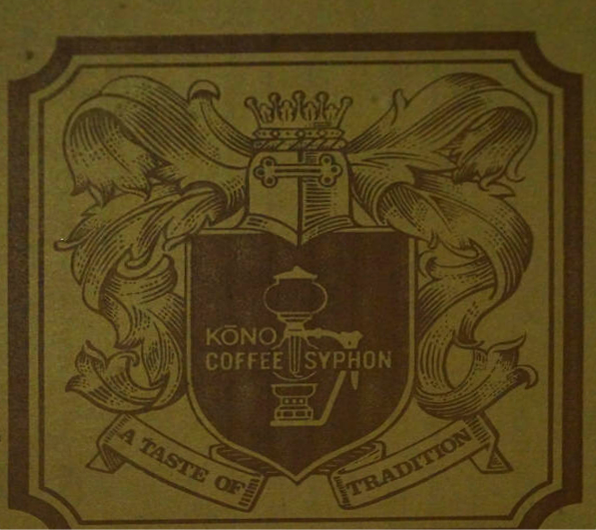
Kono drip uses a powder ratio of 1 to 10. At first, the coffee powder is moistened by injecting water drop by drop, extracting the mellow flavor of the coffee, and then diluting it with a large flow of water. What attracts most attention from Kono is the calm and attentive performance of the cook, which is quite ingenious. This may be what attracts everyone. On the front street below, there are several clips of Mr. Yamada from Taiwan's Yamada Cafe demonstrating Kono hand flushing to analyze and analyze together.
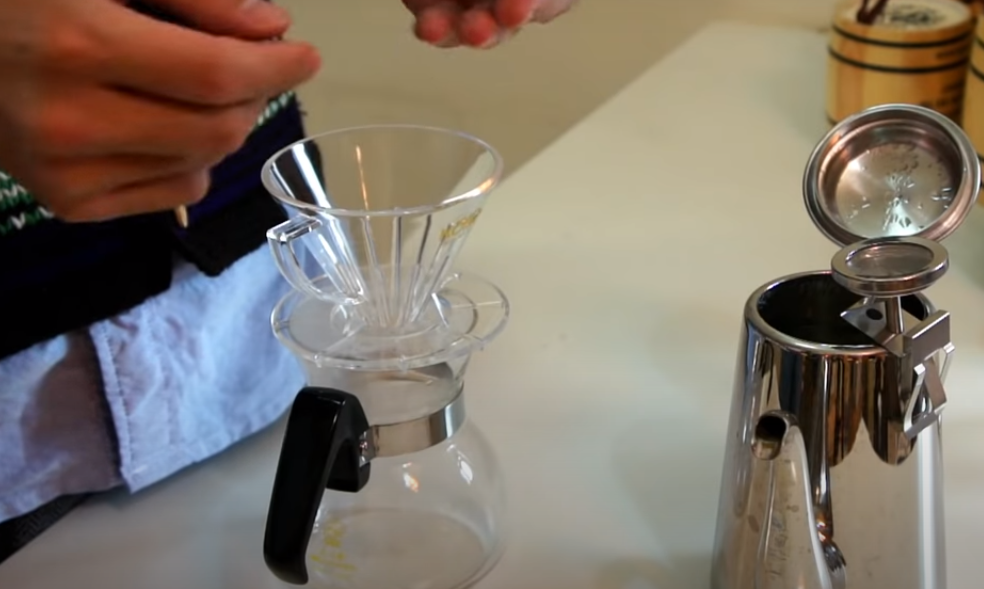
The picture shows Mr. Yamada in the folding filter paper, and we can also see from the picture that the wide-mouth version of the yukiwa kono hand punch pot, which is specially made for Kono Chong, is characterized by a wide spout to facilitate dripping water. The filter cup uses kono MD-21, which is characterized by ribs accounting for half of the cup body, so it is convenient for large amounts of powder to cook. In addition, kono has two short rib models, the difference is that the shorter the ribs, the slower the launching speed. Of course, the sharing pot also uses Kono, a safe Kono standard, and there is no electronic scale in the picture.
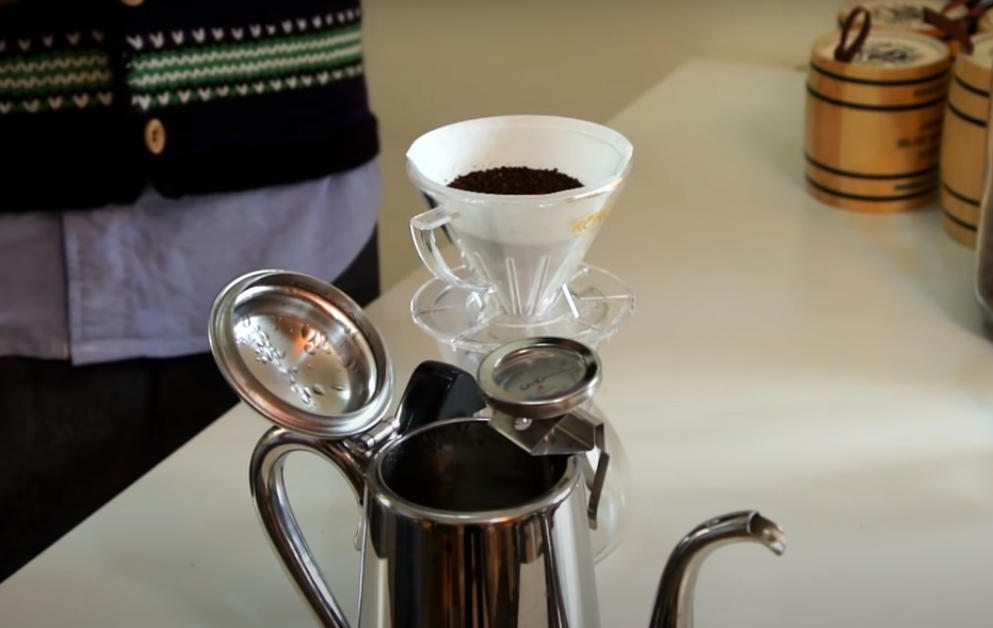
In this picture, we can see that the coffee powder has been put into the filter cup, and the filter cup is not wet, which is a feature of Kono style. When designing the filter cup, Kono thought that the dry filter paper would completely fit the filter cup under the gravity of coffee powder, and in order to make the filter paper odorless, kono filter paper was introduced. The dry filter paper helps to exhaust the coffee powder when absorbing water, and it also makes the filter paper more close to the filter cup.
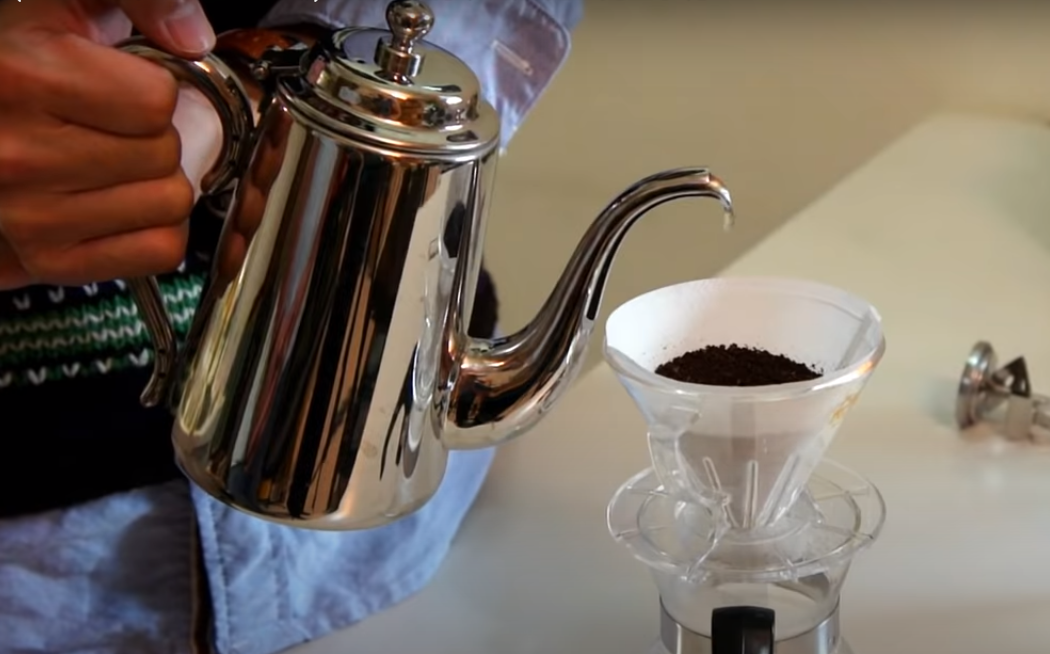
This picture shows Mr. Yamada's position as he prepares to inject water, when the water temperature is 88 degrees Celsius. Friends who want to learn drip punch can practice, there are two key points, one is the height of the table, this is very important, when the height of the table is about the base of the thigh, the right hand can be parallel to the ground, without having to lift the posture, this will be more labor-saving, drip punch is a durable war. The other is the position of holding the pot in the right hand, holding the right wrist in the left hand, and taking a small step forward with the left foot, so that the whole force will be more uniform and the pot will be more stable.
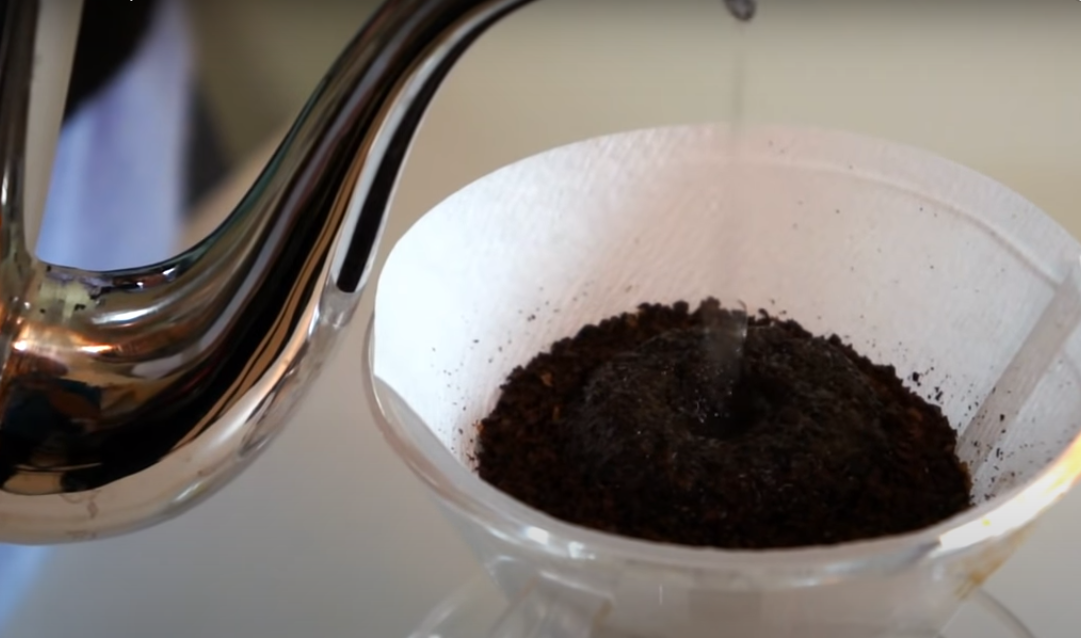
Then drop water into the center, because the powder layer in the middle is relatively thick, dripping water to the middle, the coffee will slowly expand around.
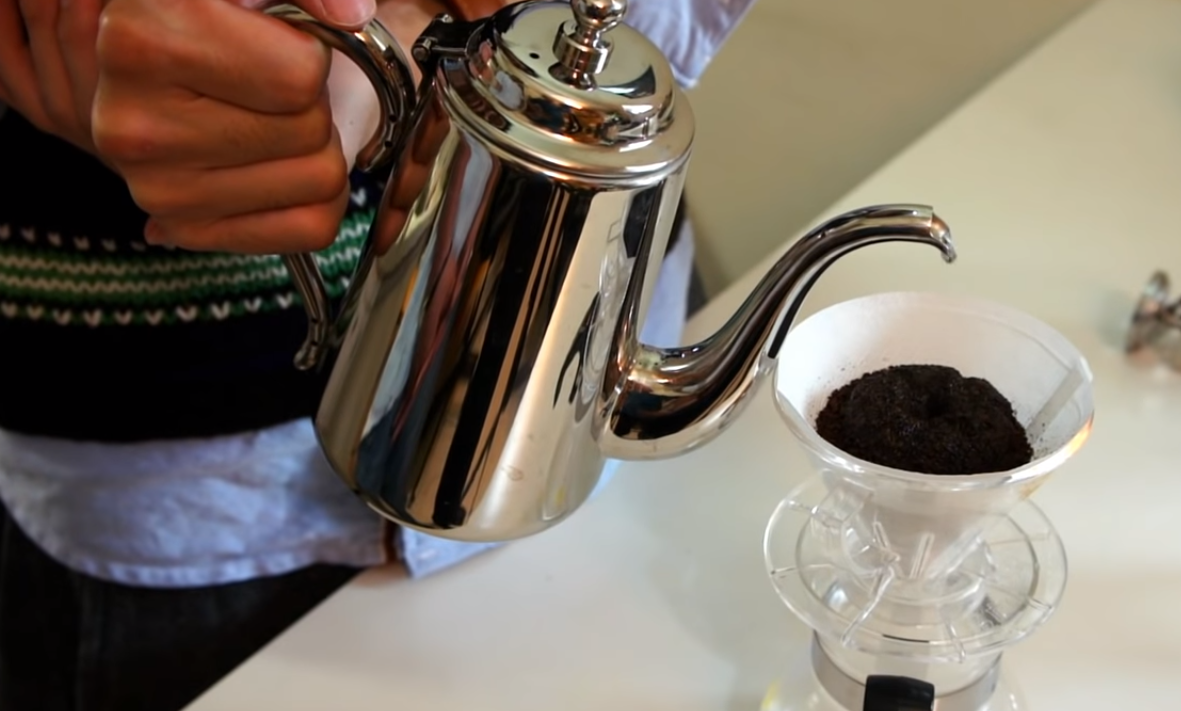
When dripping water, the frequency of water droplets should be stable, not fast or slow. Some friends will ask, this is not my hand can control. The only way to do this is to practice. Mr. Yamada also said in the video that people without coffee-making experience can also master water control through a month of practice.
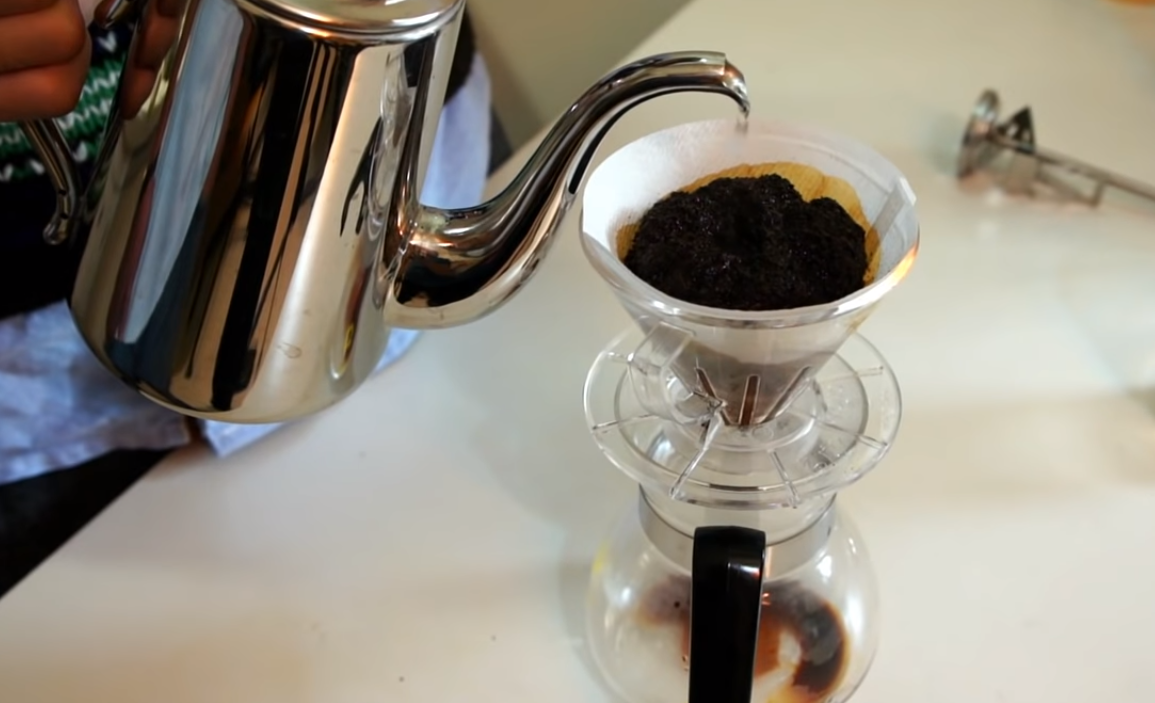
About 2 minutes after the drip, the coffee liquid begins to drip from the bottom, and the surface of the normal coffee powder layer is already wet. if it is not expanded and moist, it may be that the coffee powder is too coarse or the roasting time of the coffee beans is too long.

There are two points in judging to stop dripping. The first point is that, as shown in the picture, the coffee powder is all expanded and wet, and the filter paper is all soaked; the second point is that a layer of coffee liquid has accumulated at the bottom of the sharing pot.
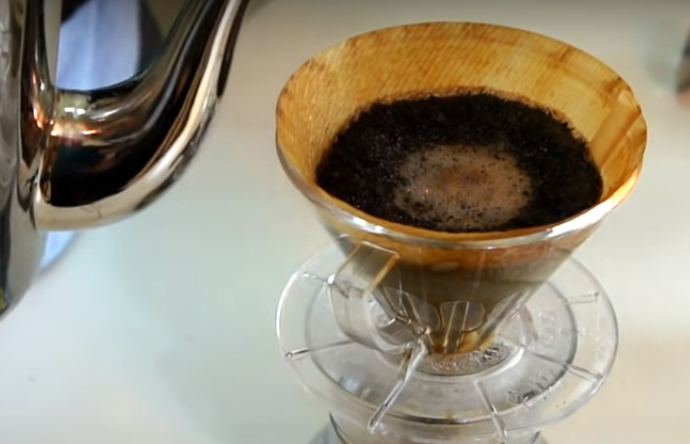
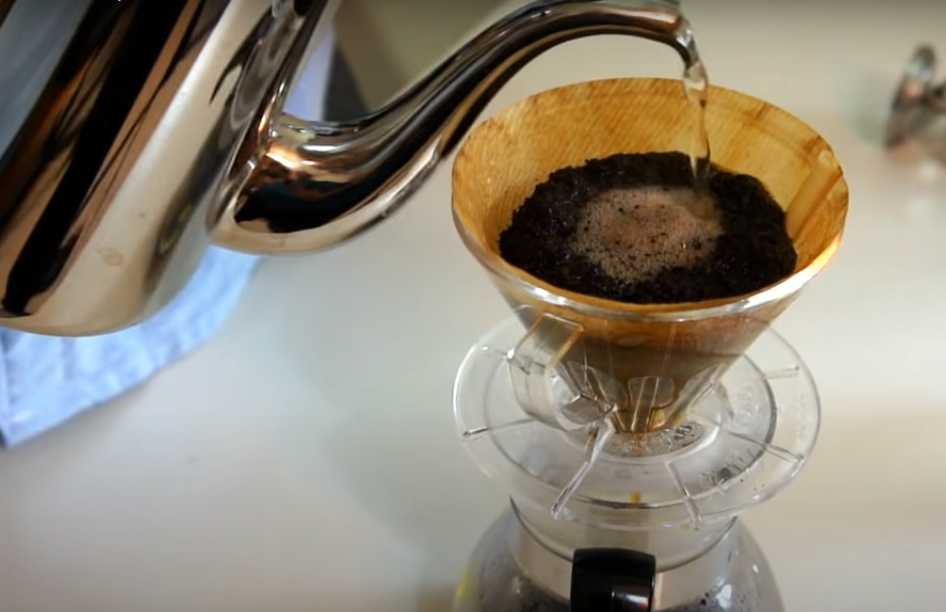
At this point in time, about 2 minutes and 40 seconds after the drip, you can enter the second stage, using a small flow of water to inject water around the community. The performance of the coffee powder layer will be bulging in the middle, and when it is about to "burst the dike", stop injecting water, let the center of the coffee powder layer sink, and continue to inject water in the same way when small pits appear. It lasts 2-3 times, and it looks like the coffee powder layer is breathing.
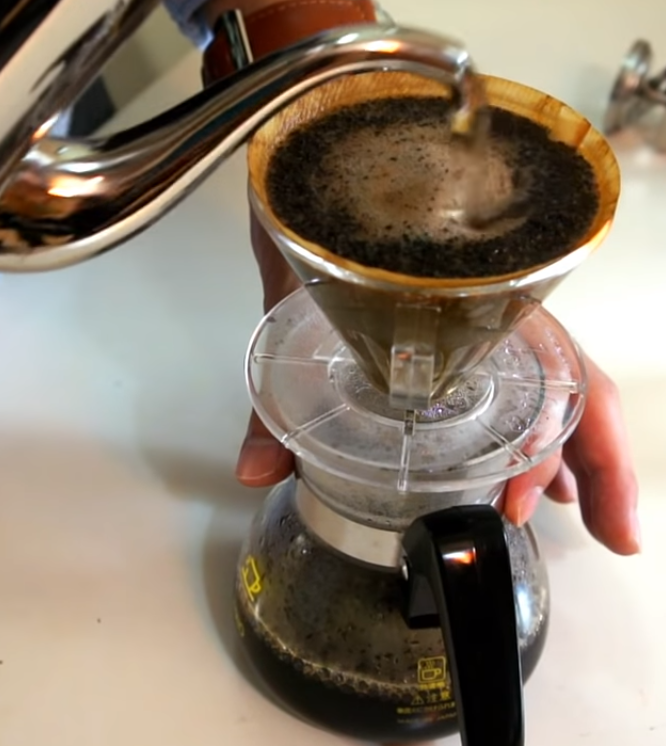
When the amount of coffee liquid reaches 2 + 3 of the target coffee amount, the flood will lift the coffee powder layer.
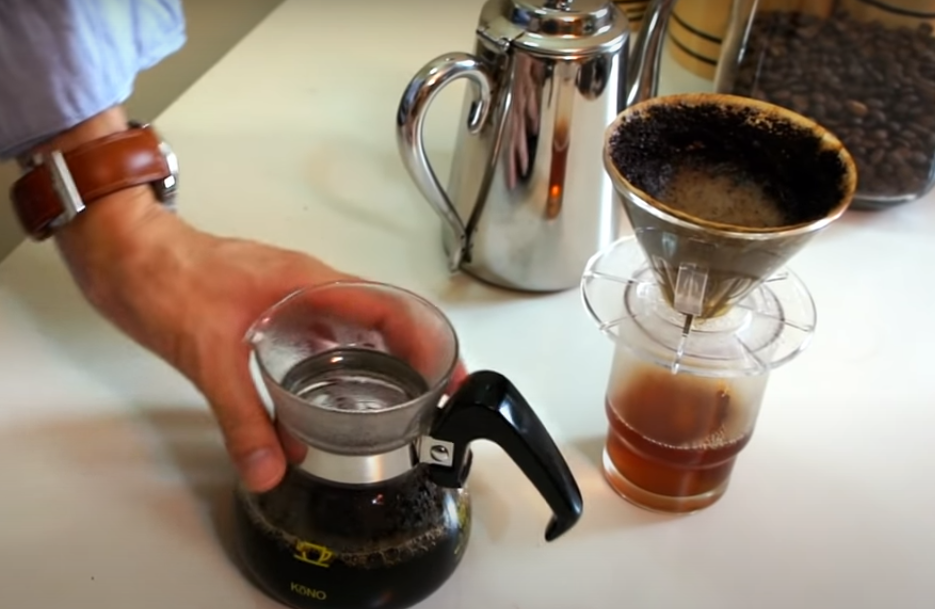
Remove the coffee filter cup directly when the target amount of coffee is reached, without waiting for the coffee liquid to be dripped out. Because there is a perception in Japanese hand brewing, that is, the bitter taste in coffee comes from the coffee foam, and if all the coffee liquid is dripped, it will bring the bitter smell from the foam to the coffee liquid, so there will be an action in which the flow of water raises the filter cup and removes it at the end, and the time from the beginning of water injection to the removal of the filter cup is 3 minutes and 32 seconds.
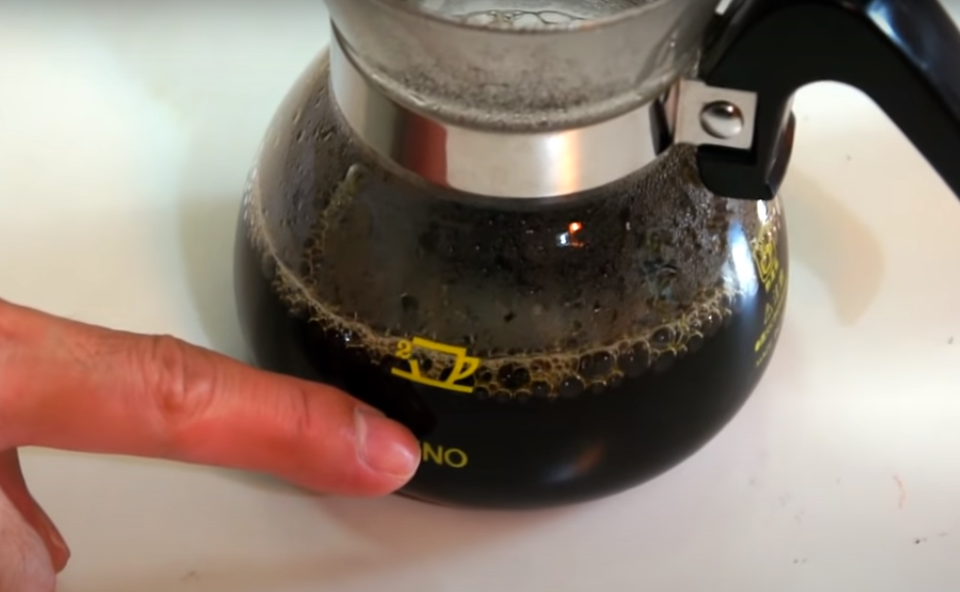
At this time, you can cover the Olympic seconds of the kono sharing pot. In the kono sharing cup, there is a logo of a coffee cup, and the bottom line of this logo is the scale of 240ml (for 2 people), so cook 24g coffee powder, and the coffee liquid reaches that line is the powder volume at 1:10. To sum up, there are about a few points to learn about Kono bit by bit. 1, coffee beans, generally choose deep-roasted fresh coffee beans, the more abundant carbon dioxide, the better, so that the exhaust effect of coffee will be good. The degree of grinding is rough grinding, and the net pass rate of about 20 is 62%. 2, cooking utensils, the spout of the hand punch pot will not turn back when the drip is bent downwards, which can also help you learn to inject water more easily. The matching kono filter cup will make the whole coffee perform better. 3, the drip flow is stable, the method has been said, pay attention to the posture, the kettle into 8 points full of water, the rest can only rely on their own to practice. The frequency of the drip is about 3 drops per second. If you drip slowly, the powder layer may not expand, and if you drip quickly, the coffee powder will fall out of the sharing pot without fully absorbing water. 4. The time node is not the stage that Kono should pay attention to. The time given above only gives us a concept of time. It is important to pay attention to the nodes where the state of the powder layer changes. 5. Be patient. This is a way of cooking with great emphasis on endurance. It is not difficult to learn. The difficulty lies in persistence. 6. When some friends are practicing drip punching, the coffee powder that often appears is not all soaked, the coffee powder does not react and does not expand, and the coffee bitterness is basically the problem of the above five points.
Important Notice :
前街咖啡 FrontStreet Coffee has moved to new addredd:
FrontStreet Coffee Address: 315,Donghua East Road,GuangZhou
Tel:020 38364473
- Prev

Can unopened coffee powder be drunk after it expires? How to reuse expired coffee powder?
In terms of flavor preservation, the best drinking period of coffee beans is to drink them within one month after roasting. After one month, the flavor loss of coffee beans is very serious, which is easy to bring unpleasant drinking experience. After three months, coffee beans should not be drunk again. Coffee beans are a kind of food and are easy to deteriorate. We can weigh.
- Next

Can the coffee beans you buy grow coffee trees? How is coffee grown?
The coffee beans bought cannot be planted, just like white rice cannot grow grain rice. Coffee cultivation needs living seeds to take root and sprout, but the coffee fruit planted is generally not suitable for drinking. After harvest, coffee fruit needs to be treated by sun and washing, and only after baking can it be suitable for drinking. The flavor is good
Related
- Beginners will see the "Coffee pull flower" guide!
- What is the difference between ice blog purified milk and ordinary milk coffee?
- Why is the Philippines the largest producer of crops in Liberia?
- For coffee extraction, should the fine powder be retained?
- How does extracted espresso fill pressed powder? How much strength does it take to press the powder?
- How to make jasmine cold extract coffee? Is the jasmine + latte good?
- Will this little toy really make the coffee taste better? How does Lily Drip affect coffee extraction?
- Will the action of slapping the filter cup also affect coffee extraction?
- What's the difference between powder-to-water ratio and powder-to-liquid ratio?
- What is the Ethiopian local species? What does it have to do with Heirloom native species?

